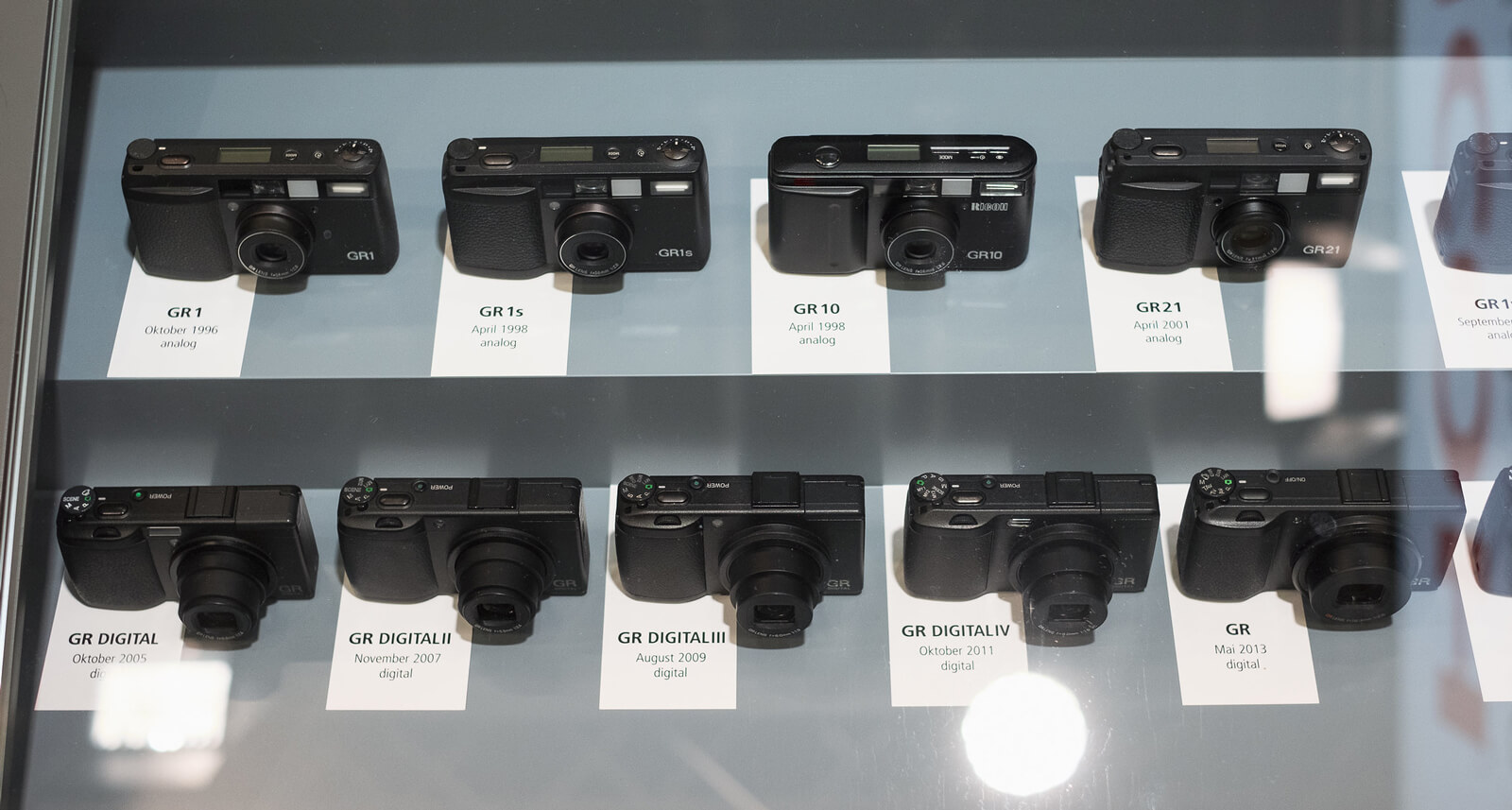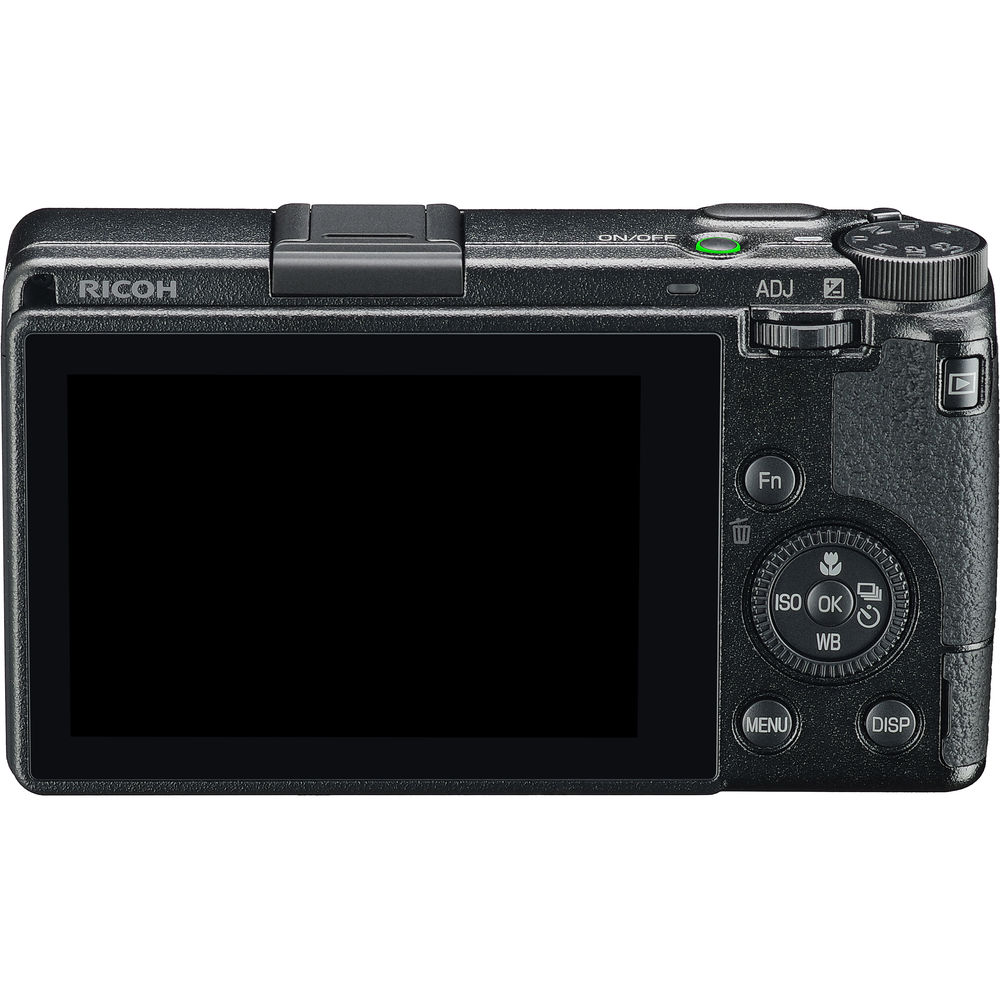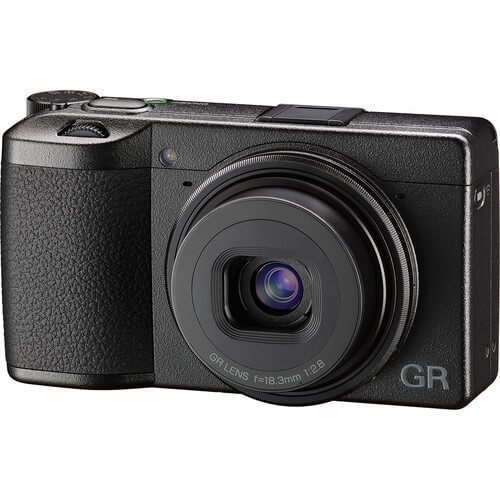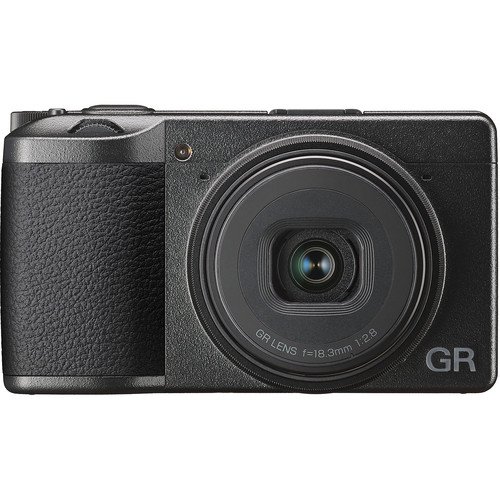
When it comes to electronic devices, Japanese manufacturers have ruled the marketplace for a long time. They’ve covered almost every aspect starting from music players to televisions to computers. One such field that they have acquired perfection in is; drum roll, photography.
Ricoh is one of those brands that started as a humble electronics manufacturer but gradually gained our trust as the makers of some of the best cameras out there in the market. Today I will be talking about the newest addition to their long line of reputed cameras; the Ricoh GR III.
This camera has a lineage that goes back to 1996 when the GR1 was first introduced. Then came the GR in 2013, GRII in 2015, and the GRIII came out in 2019.
You can guess by the years between the release of each product how much attention they pay into improving every detail of the camera in every version. So, let’s dig into my Ricoh GR III Review.
Table of Contents
Specifications of Ricoh GR III
Lens | 6 elements in 4 groups (2 aspherical lens elements) |
Focal Length | 18.3mm (Approx. 28mm in 35mm equivalent focal length) |
Aperture | F2.8~F16 |
Image Sensor | Type: Primary color filter CMOS. Size: 23.5mm x 15.6mm |
Effective Pixels | Approx. 24.24 megapixels |
Sensitivity (Standard output) | SO100~102400: Auto (ISO Auto Lower/Upper Limit and Minimum Shutter Speed can be set) |
Image Stabilization | Sensor-shift shake reduction (SR)(3-axis) |
Dust Removal | Image sensor cleaning using ultrasonic vibrations "DR II" |
Still Photography Parameters | File Format: RAW (DNG) 14bit, JPEG (Exif 2.3), DCF2.0 compliant Color Space: sRGB AdobeRGB Recorded Pixels: 【3:2】L(24M:6000x4000), M(15M:4800x3200), S(7M:3360x2240), XS(2M:1920x1280) 【1:1】L(16M:4000x4000), M(10M:3200x3200), S(5M:2240x2240), XS(1.6M:1280x1280) |
Video Recording Parameters | File Format: MPEG4 AVC/H.264 (MOV) Recorded Pixels: Full HD (1920x1080, 60p/30p/24p), Sound: Built-in stereo microphone Recording Time: Up to 25 minutes or 4GB; automatically stops recording if the internal temperature of the camera becomes high.File Format: MPEG4 AVC/H.264 (MOV) Recorded Pixels: Full HD (1920x1080, 60p/30p/24p), Sound: Built-in stereo microphone Recording Time: Up to 25 minutes or 4GB; automatically stops recording if the internal temperature of the camera becomes high. |
Storage Medium | Internal Memory (Approx. 2GB), SD/SDHC/SDXC Memory Card (Conforms to UHS-I standards) |
Focus Type | Hybrid AF (Image plane phase-matching and Contrast detection) |
Focus Mode | Auto-area AF, Zone AF, Select AF, Pinpoint AF, Tracking AF, Continuous AF, MF, Snap, ∞ |
Shutter Speed | 1/4000 sec. - 30 sec. (Limit by aperture setting F2.8: 1/2500 sec, F5.6 or greater: 1/4000 sec.) |
EV Compensation | Still Image: ±5EV, 1/3EV steps, Movie: ±2EV, 1/3EV steps |
ND Filter (2EV) | AUTO, ON, OFF |
Fine Adjustment | Adjustable ±14 steps on A-B axis or G-M axis |
Image Control | Adjust parameters: Saturation, Hue, High/Low Key Adjustment, Contrast, Contrast (Highlight), Contrast (Shadow), Sharpness, Shading, Clarity, Toning, Filter Effect, Grain Effect*, HDR Tone Level (Adjust parameter varies depending on the selected image setting) * * This parameter can be applied by firmware ver. 1.20. |
Noise Reduction | Slow Shutter Speed Noise Reduction, High-ISO Noise Reduction |
Display | Display magnification (4x, 16x), Grid display (4x4 Grid, 3x3 Grid), Histogram, Bright area warning, Electronic Level |
Playback View | Single frame, Multi-image (20, 48 frames), Display magnification (up to 16x, 100% view and Quick Zoom view available), Histogram (Y histogram, RGB histogram), Grid display (3x3 Grid, 4x4 Grid), Bright area warning, Auto Image Rotation |
LCD Monitor Type | 3.0-inch TFT color LCD (aspect ratio 3:2), Approx. 1037K dots, Wide viewing angle, Air-gapless tempered glass |
How Touch Screen Works | Capacitive sensing method |
Monitor Adjustments | Brightness, Saturation, Blue/Amber, Green/Magenta, Outdoor View Setting: ±2 Steps |
Wireless LAN Standards | IEEE 802.11b/g/n (HT20) (Wireless LAN standard protocol) |
LAN Frequency (Center Frequency) | 2412MHz~2462MHz (1ch~11ch) |
Network Security | Authentication: WPA2, Encryption: AES |
Bluetooth® | Bluetooth® v4.2 (Bluetooth Low Energy) |
Bluetooth Frequency (Center Frequency) | 2402MHz~2480MHz (CH0~CH39) |
Battery Type | Rechargeable Battery DB-110 |
Battery Life | Number of recordable images: Approx. 200 images, * With a fully-charged Rechargeable Lithium-ion Battery under the temperature at 23°C. Tested in compliance with CIPA standard. Actual results may vary depending on the shooting condition. Playback time: Approx. 180 minutes * The playback time is a guide based on RICOH's measurement method. The actual number differs according to usage conditions. |
Dimensions | Approx. 109.4(W)×61.9(H)×33.2(D)mm (excluding protrusions) |
Weight | Approx. 257g (Included dedicated battery and SD memory card), Approx. 227g (Body only) |
Lens | 6 elements in 4 groups (2 aspherical lens elements) |
Focal Length | 18.3mm (Approx. 28mm in 35mm equivalent focal length) |
Aperture | F2.8~F16 |
Image Sensor | Type: Primary color filter CMOS. Size: 23.5mm x 15.6mm |
Effective Pixels | Approx. 24.24 megapixels |
Sensitivity (Standard output) | SO100~102400: Auto (ISO Auto Lower/Upper Limit and Minimum Shutter Speed can be set) |
Image Stabilization | Sensor-shift shake reduction (SR)(3-axis) |
Dust Removal | Image sensor cleaning using ultrasonic vibrations "DR II" |
Still Photography Parameters | File Format: RAW (DNG) 14bit, JPEG (Exif 2.3), DCF2.0 compliant Color Space: sRGB AdobeRGB Recorded Pixels: 【3:2】L(24M:6000x4000), M(15M:4800x3200), S(7M:3360x2240), XS(2M:1920x1280) 【1:1】L(16M:4000x4000), M(10M:3200x3200), S(5M:2240x2240), XS(1.6M:1280x1280) |
Video Recording Parameters | File Format: MPEG4 AVC/H.264 (MOV) Recorded Pixels: Full HD (1920x1080, 60p/30p/24p), Sound: Built-in stereo microphone Recording Time: Up to 25 minutes or 4GB; automatically stops recording if the internal temperature of the camera becomes high.File Format: MPEG4 AVC/H.264 (MOV) Recorded Pixels: Full HD (1920x1080, 60p/30p/24p), Sound: Built-in stereo microphone Recording Time: Up to 25 minutes or 4GB; automatically stops recording if the internal temperature of the camera becomes high. |
Storage Medium | Internal Memory (Approx. 2GB), SD/SDHC/SDXC Memory Card (Conforms to UHS-I standards) |
Focus Type | Hybrid AF (Image plane phase-matching and Contrast detection) |
Focus Mode | Auto-area AF, Zone AF, Select AF, Pinpoint AF, Tracking AF, Continuous AF, MF, Snap, ∞ |
Shutter Speed | 1/4000 sec. - 30 sec. (Limit by aperture setting F2.8: 1/2500 sec, F5.6 or greater: 1/4000 sec.) |
EV Compensation | Still Image: ±5EV, 1/3EV steps, Movie: ±2EV, 1/3EV steps |
ND Filter (2EV) | AUTO, ON, OFF |
Fine Adjustment | Adjustable ±14 steps on A-B axis or G-M axis |
Image Control | Adjust parameters: Saturation, Hue, High/Low Key Adjustment, Contrast, Contrast (Highlight), Contrast (Shadow), Sharpness, Shading, Clarity, Toning, Filter Effect, Grain Effect*, HDR Tone Level (Adjust parameter varies depending on the selected image setting) * * This parameter can be applied by firmware ver. 1.20. |
Noise Reduction | Slow Shutter Speed Noise Reduction, High-ISO Noise Reduction |
Display | Display magnification (4x, 16x), Grid display (4x4 Grid, 3x3 Grid), Histogram, Bright area warning, Electronic Level |
Playback View | Single frame, Multi-image (20, 48 frames), Display magnification (up to 16x, 100% view and Quick Zoom view available), Histogram (Y histogram, RGB histogram), Grid display (3x3 Grid, 4x4 Grid), Bright area warning, Auto Image Rotation |
LCD Monitor Type | 3.0-inch TFT color LCD (aspect ratio 3:2), Approx. 1037K dots, Wide viewing angle, Air-gapless tempered glass |
How Touch Screen Works | Capacitive sensing method |
Monitor Adjustments | Brightness, Saturation, Blue/Amber, Green/Magenta, Outdoor View Setting: ±2 Steps |
Wireless LAN Standards | IEEE 802.11b/g/n (HT20) (Wireless LAN standard protocol) |
LAN Frequency (Center Frequency) | 2412MHz~2462MHz (1ch~11ch) |
Network Security | Authentication: WPA2, Encryption: AES |
Bluetooth® | Bluetooth® v4.2 (Bluetooth Low Energy) |
Bluetooth Frequency (Center Frequency) | 2402MHz~2480MHz (CH0~CH39) |
Battery Type | Rechargeable Battery DB-110 |
Battery Life | Number of recordable images: Approx. 200 images, * With a fully-charged Rechargeable Lithium-ion Battery under the temperature at 23°C. Tested in compliance with CIPA standard. Actual results may vary depending on the shooting condition. Playback time: Approx. 180 minutes * The playback time is a guide based on RICOH's measurement method. The actual number differs according to usage conditions. |
Dimensions | Approx. 109.4(W)×61.9(H)×33.2(D)mm (excluding protrusions) |
Weight | Approx. 257g (Included dedicated battery and SD memory card), Approx. 227g (Body only) |
How is the Build Quality?
It may not be fair to judge a book by its cover, but it’s important to consider the looks of a camera when you’re buying one.
This camera impressed me at first glance. It has a metallic that is coated with a leatherette matte finish, making it look very stealthy and all the more suitable for outdoor photography.
Another thing about the build of the camera that gave it an ultra-modern Japanese ‘touch’ is the touchscreen display. No more struggling with knobs and buttons while the perfect moment slips out of your hands.
Something to Note About Touchscreen and Sensor Performance
The touchscreen is very responsive and has an easy interface. Although there is no viewfinder, the screen is large enough to make up for it.
On the contrary, if it had a viewfinder it would’ve proven to be less useful than it is now, because then you won’t be able to see the display as clearly as you do now from a distance.

At first go, I was utterly surprised by the performance of the sensor. Despite being a compact camera, the Ricoh GRIII is equipped with a stabilized 24MP APS-C sensor. I didn’t expect the sensor to be this good especially when the lens is just 18.3mm.
Will the Lens Live Up to Your Expectations?
Hold on! If you think that makes the lens any less, then it’s got more surprises in store for you. The lens, despite being the only 18.3mm, can be used as an alternative for a 28mm lens.
The lens alone will make you look twice at it both for its physical and functional features.
Read: Canon G7X III Review
For one thing, it has a bezel on the front which is removable in case you want to get an adaptor with a wider angle or a filter. To break it down a little further, the lens while being 18.3mm has an F2.8 aperture giving it a full frame that can easily substitute a 28mm lens.
It has a 9-blade rounded aperture that gives you a sharp image quality along with great autofocus.
The lens also delivers a tremendous macro performance going a full 10cm without the macro mode activated. And when the macro mode is turned on, it goes down to as far as 6cm, catching the tiniest of details without making it look hazy.
How to Go about Video Recording?
There’s a dedicated button on the side of the camera which is solely there for video recording. So, you can just switch to video mode at any time making the best use of this accessibility without having to fumble.
Speaking of video quality, the Ricoh GR III delivers a video quality of 1080p at 60FPS, which is very decent. And if you’re not into a video that much, you can customize the destination of this button to any other function of your choice.
Do Manual and Autofocus Systems Work?
This is one area of the camera I’m a bit of disappointed with. There’s no manual focus. This means you cannot customize the focus to work as you like it and you’re sort of stuck with the kind of focus offered by the camera’s mercy.
But the manufacturers compensated for it by equipping the lens with a 28mm focal length.
The lens will make up for the lack of manual focus by offering you a much larger frame. You can just take it out of your pocket and capture moments with it like you’d do with your smartphone. Yes, it is that much mobile and compact, and pretty lightweight too.

You can easily carry it around the whole day in your pocket without any extra carrier or pouch. All this makes it a perfect companion for a day out in the street for any photographer.
Even in bright sunlight the autofocus activates very quickly and gets to work without any hassle. And on manual focus, the lens allows you to distance by toggling the wheel to switch between distances. The lens itself is very sharp with a 24MP sensor that gives you a lot of cropping power.
Plus, if you want to have some fun with blur and bokeh, you can do so using the camera’s snap focus feature which will allow you to push the background further away from your subject or blur out the light.
This will add new dynamics between the subject and its background by giving it an out-of-focus or a bokeh effect.
I’ve Got to Say Something about the Modes of the Camera
If you’ve read my Ricoh GR IIII Review till now, you’d know that this bad boy is jam-packed with a ton of cool features. Let’s start with the interface. The interface is very accessible and user-friendly. Almost all of the camera’s features appear on the UI.
The autofocus is fast and sticky with just a tap on the touchscreen. This is a huge advantage compared to the MKII which had a 16MP sensor.

The previous MKII had the option to turn the light off around the power button. An example of the MKIII, in this case, would: when switching between metering modes I switched between multi-segment and the MKIII exclusive “Highlight Weighted” metering mode.
The “Overlay” makes it quick and amp; easy to switch between different modes but at the beginning, it is rather annoying if you’re not used to it. The overlay can be turned off from “Shutter Btn Confirmation”.
Read: Leica Q2 Review
The “Highlight-weighted” metering mode is exceptional. Basically, it is an automatic ETTR (Exposure to the right). This can be controlled with exposure compensation.
You can avoid using autofocus as you can preset it manually and name it for that specific need. This is another reason a tilt-able display or viewfinder isn’t needed that much since you know where the focus is. We only need to focus on the scene and subject.
If the need arises switching to autofocus is always an option. You can input customized presets to always be ready for every situation.
How Good is the Resolution?
When it comes to resolution, usually in low light the resolution tends to degrade. But not with the Ricoh GR III. The sensor and the processor of this camera can be pushed to the limit to find the noise and grain in the picture to be satisfactory.
On top of that, good low light capabilities will also lead to an excellent dynamic range. Now you can show off different aspects of a shot without compromising its image quality.

I Liked the Storage And Data Transfer Parameters
Although a better image quality also means bigger sized files, the internal memory of this camera is 2GB which lets you store up to 40 images, and if that is still not adequate then you can always use an SD card to extend the memory storage.
The camera allows the transformation of RAW files easily to your phone or tab or any other device with Bluetooth. This makes the GR III one of the most customizable cameras you’ll find.
Ricoh GR III is Your Discreet Partner in Crime
When you’re doing street photography, there are moments when you need to be quiet and sneaky. A loud shutter with a blinding flash can ruin the fun for you.
You don’t need to worry about that when you have the Ricoh GR III in your hand. It comes with a leaf shutter that on one hand is extremely quiet, and on the other, allows you to sync it with any flash even if it isn’t high-sync speed compatible. Even an old vintage flash will do.
My Tips on Operating the Camera Better
If this is your first time using a Ricoh camera, or a compact camera in general, you could opt for some of these tricks and tips I picked up from my personal experience.
Like when you’re editing or tweaking your photos taken with this device on a PC, you can use the “Capture One Pro” instead of “Adobe Lightroom” to get the best out of your photos. Also, when I was writing this review, I was unable to get a lens profile on Adobe Lightroom.
Later, I figured I’d have to do it manually, which I eventually did after several failed attempts. If you want to develop or post-process your photos on a computer, you can do it in JPEG or RAW formats. Or you can find another app that works. Please let me know if you do.
Since there is no built-in flash, you need to by an external flash for this camera. A good pick would be the Flash Q wireless trigger as well as a Q20 MKII flash. These are small, compact, rechargeable flash triggers but not with USB-C. These also can be used with any flash.
Q20 MKII is convenient as it can fire without the receiver. This can be quickly snapped onto the trigger as well. There are also some minor issues with the lens vignette, but they can easily be resolved by tweaking with the light and shading and highlights in an editing application.
Ricoh GR III
Things that I loved
Things That Could Use a Little Work
Comparing Ricoh GR III and the GR II
Camera | Ricoh GR II | Ricoh GR III |
|---|---|---|
Preview | ||
Released | July 2015 | March 2019 |
CMOS Size | CMOS Size: 23.5 x 15.5mm Total:16.9 MP Effective: 16.2 MP | CMOS Size: 23.5 x 15.6mm Total: 24.8 MP Effective: 24.2 MP |
Shutter Mechanics | Shutter Mechanical: Fastest 1/4000sec Bulb Self-Timer Slowest: 300sec | Shutter Mechanical: Fastest 1/4000sec Bulb Self-Timer Slowest: 30sec |
Focal Length | Focal Length: 18mm (28mm full frame equivalent) Aperture: F2.8 Lens construction: 7 elements in 5 groups Aspherical: 2 Name: Ricoh GR | Focal Length: 18mm (28mm full frame equivalent) Aperture: F2.8 Lens construction: 6 elements in 4 groups Aspherical: 2 Name: Ricoh GR |
Video Quality | Full HD 30fps | Full HD 60fps |
Display Size | Display: 3.0” 1,230,000 dots Normal Display | Display: 3.0” 1,037,000 dots Touchscreen Display |
Autofocus Type | Autofocus: Contrast Has Wifi Capabilities Bluetooth isn’t available Processor: Engine VHas a hot shoe (multipurpose mount) | Autofocus: Hybrid (Phase & Contrast) Has Wifi Capabilities Bluetooth function available Processor: Engine VI Has a hot shoe (multipurpose mount) |
Weight | 251g/8.8 oz | 257g/ 9.0 oz |
Battery Lifespan | 320 shots | 300 shots |
Price |
Should You Buy It?
If you’re a street photographer, absolutely yes! It’s great for street photography or a trip out in the country. The versatile lens can get you sharp details of anything you’d point it at and capture each moment before it passes.
The snap focus feature makes it the best tool for street photography as it quickly focuses on the subject and blurs out all the nonsense around it. This could up your game at street photography. And when you’d do this with a well-lit background, it will give your photos a bokeh effect.
Also, the self-cleansing image sensor cleans itself by literally shaking off the dust from it using ultrasonic vibrations. So, no more worrying about dust getting into all the sensitive nooks and crannies of your new favorite toy.
There are some videos and Ricoh GR III Reviews up on the internet that make its drawbacks look huge compared to the advantages this compact camera could bring to you.
Take my advice, if you want a camera that is compact in the most literal sense of the term, you can rely on this little one here, and it won’t let you down.


